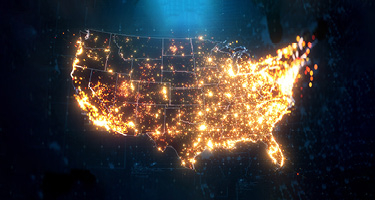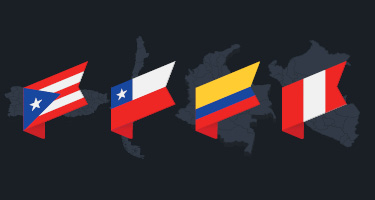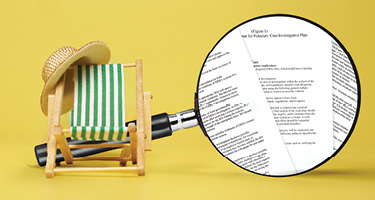Trademark Protection in the Metaverse
By Julián Vadillo | 24-Oct-2022
In 1994 I attended a presentation on a new thing, the Internet, organized by the Mexican Copyright Office and some other entities. It was the first time I ever saw a Web1 (read-only) website. I believe it took around ten minutes to open during the presentation. Dial-tone, of course.
Then came Web2 (read+write), along with e-mail, social media, and cloud computing. Web2 is interactive but still closed and centralized; different platforms are owned by different companies found in a unique place and location called web-address or domain.
And now, in the digital era where unprecedented phenomena rise every couple of years, we have Blockchain, NFTs, and Web3, where the metaverse would run.
As I understand it, the Blockchain is a pier-to-pier decentralized network. It is a chain of blocks on which transaction details are recorded after authentication and verification by the designated network participants; a distributed database that is shared among the nodes of a computer network, maintaining a secure and decentralized record of transactions. The independent nature of blockchains allows buyers and sellers to deal directly with one another instead of with an intermediary such as Web2’s Amazon, e-bay, etc.
NFT stands for “Non-Fungible Token.” Again, as I understand this technology, it is a digital asset that can be purchased, sold, and traded just as any other property, but tokenized, meaning that it is attached to a digital certificate of ownership. Each NFT is unique; a non-fungible asset such as a rare diamond, a work of art, or any other irreplaceable asset with no equivalent, unlike a fungible asset such as money and even cryptocurrency, which can be exchanged for something similar or equal in value. NFTs will be the way to buy things in the metaverse, get hold of virtual goods, own a membership, enter a club, or even get a ticket to an event.
The metaverse is planned to be a digital world that is always active, encompassing the use of technologies such as virtual reality, augmented reality, and the blockchain. Users in the metaverse would interact socially and for business through avatars, with NFTs as the common key. At this point, the metaverse is a general term still being built in an experimental phase, so it is hard to know how exactly it will turn out.
There are several digital worlds out there, and the plan is to join them into one platform, defining the metaverse as an operating reality. Meta’s idea of this new digital world, presented by Mark Zuckerberg, it is certainly an ambitious idea and it could be, in my opinion, the equivalent to the Playboy website that took ten minutes to open back in 1994. Who knows what the metaverse will be like 28 years from now? We might be spending most or all of our time in a virtual world, as seen in fantasies like The Matrix, Ready Player One, or Don’t Worry Darling.
Once the metaverse becomes a real digital universe, the question arises: who will have jurisdiction over it, and how will intellectual property rights be enforced? For instance, if the metaverse will run in real-time over different platforms, will it be possible to make a recording on potential trademark, copyright, design, or patent infringement to have evidence for legal action?
The challenges are many; would new laws be necessary to adapt to this new technology? Should the law adapt to the metaverse, or should the metaverse adapt to the law? In my opinion, the answer would need to be the latter, as it has been since Web1 Internet. Virtual worlds have been around for decades, so the metaverse is just another digital platform where users will use intellectual property already regulated and protected by law.
Users may interact in the metaverse through avatars, with NFTs as the common key. Still, not only would the avatars interact with others, but also with businesses, real estate, advertising, virtual stores, virtual goods, events, and so on, so brands will get involved directly in the virtual world as a new way to interact with consumers.
For the time being, businesses are protecting trademarks in different classes of goods and services using their descriptions terms related to this new technology, kind of the way we have been doing for decades with the Internet, i.e., “physical retail store, advertising; online retail store services; electronic catalog ordering services” (Class 35). Current protection for NFTs falls into Class 9, with specifications such as “downloadable files authenticated by NFTs” or “multimedia files containing artwork, text, audio, and video, authenticated by NFTs,” or in Class 35 for “retail store services featuring virtual goods in virtual worlds,” or in Class 42 for “programming virtual goods for use in online virtual worlds.”
As for current metaverse-related enforcement, it can be illustrated by a couple of cases out there. There is the one of Roblox Corp v. Wowwee Group Ltd, where the latter makes and sells real-life dolls with distinctive designs of the avatars in Roblox; [Roblox sues tech toymaker WowWee over avatar figurines], or BMW v Turbosquid, where the latter designs cars belonging the first as NFTs.
The truth and conclusion are that NFTs, Web 3, Blockchain technology, and the metaverse will bring many challenges to holders of intellectual property rights that cannot be anticipated so far. Adjustments will be necessary in the upcoming years based on cases like the one illustrated above, but I’m sure there will be a way for effective protection. Again, the metaverse is just another digital platform.
















